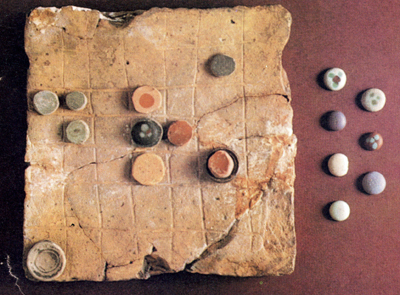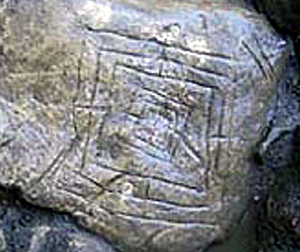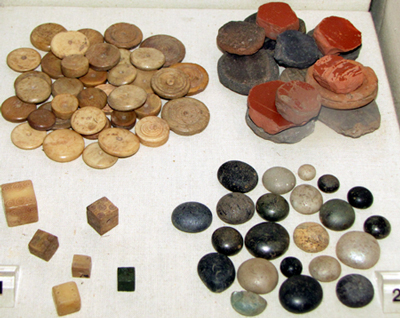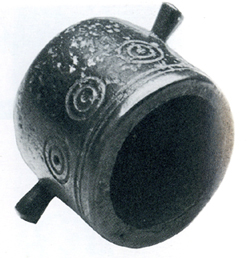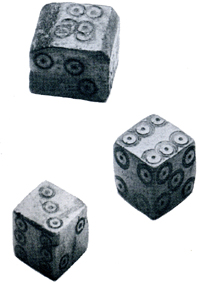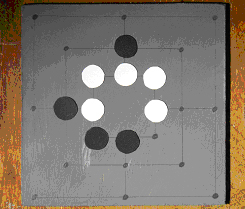|
Roman Board Games
People have been enjoying board games for thousands of years. Games with counters and squares on a board were popular with Roman soldiers. Sometimes these boards were made of stone or tiles, and the counters were made of stone, pottery or bone, and so they have survived for two thousand years and can be seen in museums.
On this page are a few examples of these games. The rules for one such board game, called merels (or merrills, or Nine Men's Morris), are still known today. The merels board has three squares, inside each other, and connected with four lines, as you see in the photo below.
The rules for merels are at the bottom of this page.
|
A board game marked on a tile, from Silchester.
|
|
A stone merels board
|
Counters and dice from the Roman baths at Caerleon, Wales |
|
|
|
|
Dice shaker - this and the dice were found in London |
Dice - sometimes dice were loaded - that means they were weighted so the thrower usually got the number he wanted. In other words, he was cheating. |
| The Rules of Merels, or Nine Men's Morris: 1. At the start, one of the players has 9 white counters and the other has 9 black counters. 2. Take it in turns to place one of your counters on a dot on the board. 3. Try to get three counters in a row, all along one line (the diagonal doesnít count). If you get three in a row this is called a Ďmillí, and it means you can take one of your opponentís counters off the board. However you canít take off any counters that are in a mill. In the picture to the right, white has got a mill and can take off one of the black counters. 4. When all the counters are on the board, you can start moving them. On your turn you can move one counter one space along a line, to another dot. You are still trying to get three in a row, so you can take your opponentís counters off the board. How to Win There are two ways to win. 1. If your opponent only has two counters left, you have won. 2. If your opponent canít move anywhere (because all the places are blocked), you have won. |
|

